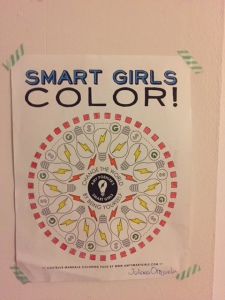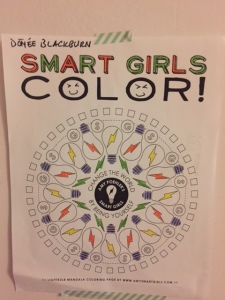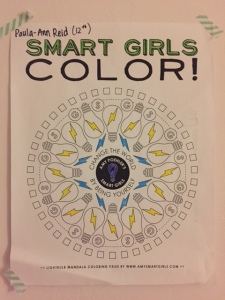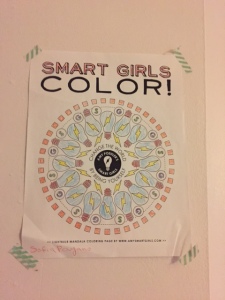Recently, coloring has been designated as an activity to help combat stress in adults, separating it from the trivial pursuit of childhood that usually defines it. Amy Poehler’s Smart Girls campaign, which provides girls with a positive spaces that teaches about critical thinking and social justice, has taken to promoting the benefits of coloring mandalas.
According to psychologist Gloria Martínez Ayala, “[coloring] involves both logic, by which we color forms, and creativity, when mixing and matching colors. This incorporates the areas of the cerebral cortex involved in vision and fine motor skills (coordination necessary to make small, precise movements). The relaxation that it provides lowers the activity of the amygdala, a basic part of our brain involved in controlling emotion that is affected by stress.”
So what does this mean? Coloring, although a rudimentary and simple activity, can provide a distraction from your anxieties. The repetitive movements of coloring act as a form of active meditation and helps to relieve anxiety.
I decided to put these results to the test by creating my own experiment. I asked a handful of Hewitt seniors, the most notoriously stressed of students, to color mandalas; the results varied in color and style and are displayed all throughout this article.
Donee Blackburn ’15, an experimentee, said “I’m not sure it reduced my stress, but it was fun.”
Paula-Ann Reid ’15 thought differently about the activity and its results: “I got a little focused on making my coloring perfect which brought on a different kind of stress, but it was nice to focus on something other than all the work I have to do.”
While the results varied, if you’re feeling stressed out and don’t know how to function, take a break from work. Draw some doodles on a pad. Who knows, maybe your secret to coping with stress actually lies in a pen and paper.



